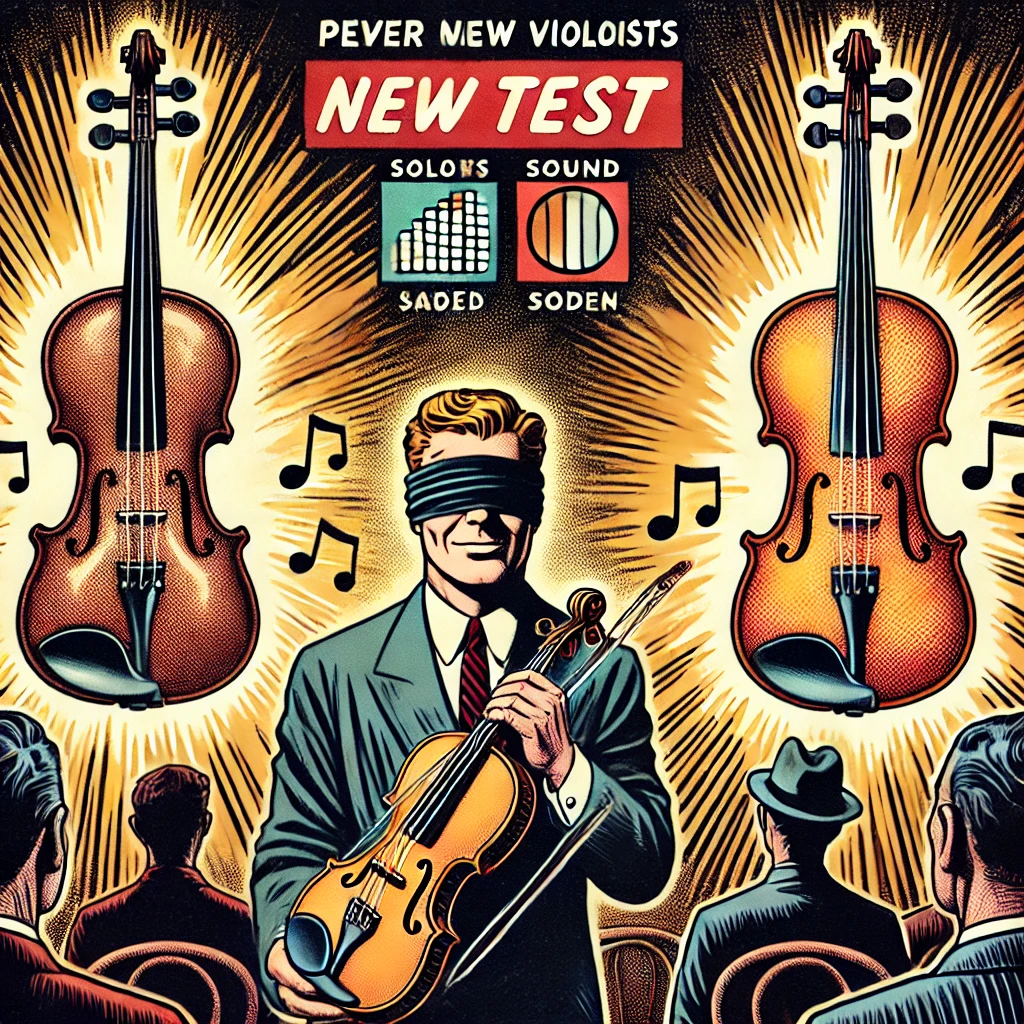“…the fundamental premise of tonal superiority has not yet been properly investigated.”
http://www.pnas.org/search?fulltext=violi n&submit=yes&x=0&y=0
http://www.pnas.org/content/109/3/760.a bstract
ABSTRACT
Most violinists believe that instruments by Stradivari and Guarneri “del Gesu” are tonally superior to other violins–and to new violins in particular. Many mechanical and acoustical factors have been proposed to account for this superiority; however, the fundamental premise of tonal superiority has not yet been properly investigated. Player’s judgments about a Stradivari’s sound may be biased by the violin’s extraordinary monetary value and historical importance, but no studies designed to preclude such biasing factors have yet been published. We asked 21 experienced violinists to compare violins by Stradivari and Guarneri del Gesu with high-quality new instruments. The resulting preferences were based on the violinists’ individual experiences of playing the instruments under double-blind conditions in a room with relatively dry acoustics. We found that (i) the most-preferred violin was new; (ii) the least-preferred was by Stradivari; (iii) there was scant correlation between an instrument’s age and monetary value and its perceived quality; and (iv) most players seemed unable to tell whether their most-preferred instrument was new or old. These results present a striking challenge to conventional wisdom. Differences in taste among individual players, along with differences in playing qualities among individual instruments, appear more important than any general differences between new and old violins. Rather than searching for the “secret” of Stradivari, future research might best focused on how violinists evaluate instruments, on which specific playing qualities are most important to them, and on how these qualities relate to measurable attributes of the instruments, whether old or new.
Research has indeed shown that in blind tests, soloists sometimes prefer new violins over old ones. This finding may seem surprising given the long-standing reputation and perceived value of vintage violins made by renowned luthiers such as Antonio Stradivari and Giuseppe Guarneri del Gesù.
Several studies have investigated the preferences of professional musicians, including soloists and concertmasters, in blind tests comparing old and new violins. Some of these studies have found that musicians often express a preference for the sound and playability of new violins over old ones, even when they are not informed about the instruments’ age or provenance.
There are several factors that may contribute to this preference for new violins:
1. Quality of Craftsmanship: Modern violin makers have access to advanced tools, materials, and techniques that may allow them to produce instruments of exceptional quality and consistency. While vintage violins may have historical significance and craftsmanship, not all of them exhibit the same level of playability or tonal qualities.
2. Variability Among Vintage Instruments: Not all old violins are equal in terms of sound quality, playability, and condition. Vintage violins can vary widely in their tonal characteristics, with some being highly prized for their rich, resonant sound, while others may be less desirable due to defects or damage over time.
3. Bias and Expectations: Musicians’ preferences for old violins may be influenced by cultural perceptions and expectations surrounding the mystique of vintage instruments. Blind tests help mitigate bias by allowing musicians to evaluate instruments solely based on their sound and playability, without being influenced by factors such as age or provenance.
4. Adaptability of New Instruments: New violins may offer greater adaptability and responsiveness to the individual playing style and preferences of musicians. Modern makers can tailor instruments to meet specific performance needs, allowing for a more personalized and versatile playing experience.
Overall, while old violins certainly hold historical and cultural significance, blind tests have shown that some professional musicians may prefer the sound and playability of new violins. This finding highlights the ongoing innovation and craftsmanship in contemporary violin making and challenges traditional notions about the superiority of vintage instruments.
